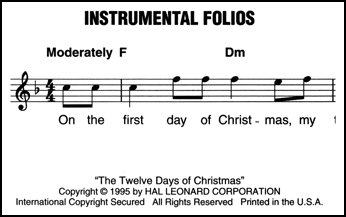Instrumental Folio Series
Loading...

Now students can play their favorite music on their favorite instrument! These books feature intermediate-level arrangements in friendly keys with simplified rhythms and playable ranges perfect for students who have been playing for a few years.
No products found.
